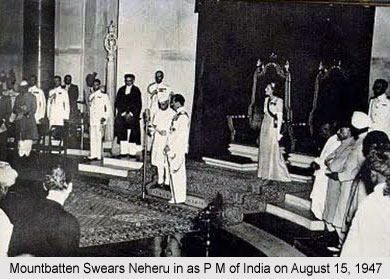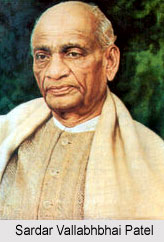 The Indian Independence Act 1947 was the legislation passed and enacted by the British Parliament that officially declared the Independence of India. The Parliament of the United Kingdom passed the Act which partitioned British India into 2 separate and independent countries, India and Pakistan. The legislation of Indian Independence Act was designed by the Prime Minister Clement Attlee as Indian Political Parties agreed on the transfer of power from the British Government to the independent Indian Government and the Partition of India. This act received royal assent on 18th July, 1947.The Agreement was made with Lord Mountbatten, which was known as the 3 June Plan or Mountbatten Plan. The 2 newly formed countries of India and Pakistan came into existence from 15th August, in the year 1947.
The Indian Independence Act 1947 was the legislation passed and enacted by the British Parliament that officially declared the Independence of India. The Parliament of the United Kingdom passed the Act which partitioned British India into 2 separate and independent countries, India and Pakistan. The legislation of Indian Independence Act was designed by the Prime Minister Clement Attlee as Indian Political Parties agreed on the transfer of power from the British Government to the independent Indian Government and the Partition of India. This act received royal assent on 18th July, 1947.The Agreement was made with Lord Mountbatten, which was known as the 3 June Plan or Mountbatten Plan. The 2 newly formed countries of India and Pakistan came into existence from 15th August, in the year 1947.
History of Indian Independence Act 1947
On 3rd June 1947, a plan was announced that was proposed by the British government which included the following principles:
* Principle of Partition of India was approved by the British Government
* Successor governments would receive dominion status
* Implicit right to secede from the British Commonwealth
Clement Attlee, the Prime Minister of the United Kingdom, announced on 20th February, 1947 that the British Government would grant full self government to British India latest by June 1948. Moreover, the future of Princely States would be decided after the date of final transfer is decided and the Indian Independence Act 1947 was the implementation of June 3 Plan.
 Indian Independence Act was passed in June 1947, which specified the following:
Indian Independence Act was passed in June 1947, which specified the following:
* The British rule of India should be over on the midnight of August 15, 1947.
* An independent dominion of India shall be created out of the United Provinces, Central Provinces, Bombay Presidency, Madras Presidency, the Carnatic, East Punjab, West Bengal, Assam and the Northeast Frontier Agency. The territories of the Andaman and Nicobar Islands and the Lakshadweep Islands are also turned over to the Indian Dominion.
* An independent dominion of Pakistan shall be created out of the provinces of West Punjab, North West Frontier Province, Sindh and East Bengal.
* The all Princely states that were officially related to British Empire were made free from all the treaties and relationships and they could decide which dominion to join. Lord Mountbatten thought that if the princely state remained independent within the dominion that may lead to chaos and thus made their accession a necessity of the Indian Independence Act.
* Both the Indian and Pakistan Dominions would be members of the British Commonwealth and was allowed to leave whenever they pleased.
* Both Dominions of India and Pakistan were completely self-governing in their internal affairs, foreign affairs and national security but the British monarch will continue to be their head of state, represented by the Governor-General of India and a new Governor-General of Pakistan. Both Dominions shall convene their Constituent Assemblies and write their respective constitutions.
* The British monarch shall be permitted to remove the title of Emperor of India from the Royal Style and Titles. King George VI subsequently removed the title by Order in council on June 22, 1948.
Lord Mountbatten was the last Viceroy of India under British rules and became the Governor General of Independent India. Jawaharlal Nehru became the Prime Minister of India, Dr. Rajendra Prasad was the President and Sardar Vallabhbhai Patel was the Deputy Prime minister of India. Five hundred and sixty princely states were annexed with India, among which Junagadh and Hyderabad was took over after military action.
Effects of Indian Independence Act
After the act was passed, some religion based riots took place in the nation. The situation was much violent. The Muslims had to migrate from the `Would be India` and Hindus had to migrate from the `Would be Pakistan`. All of their possessions and properties were left behind.
Jawaharlal Nehru was appointed as the first Indian Prime Minister and Sardar Vallabhbhai Patel was became the Deputy Prime Minister of India. Over 560 princely states, including Jammu and Kashmir, were granted to India.



















